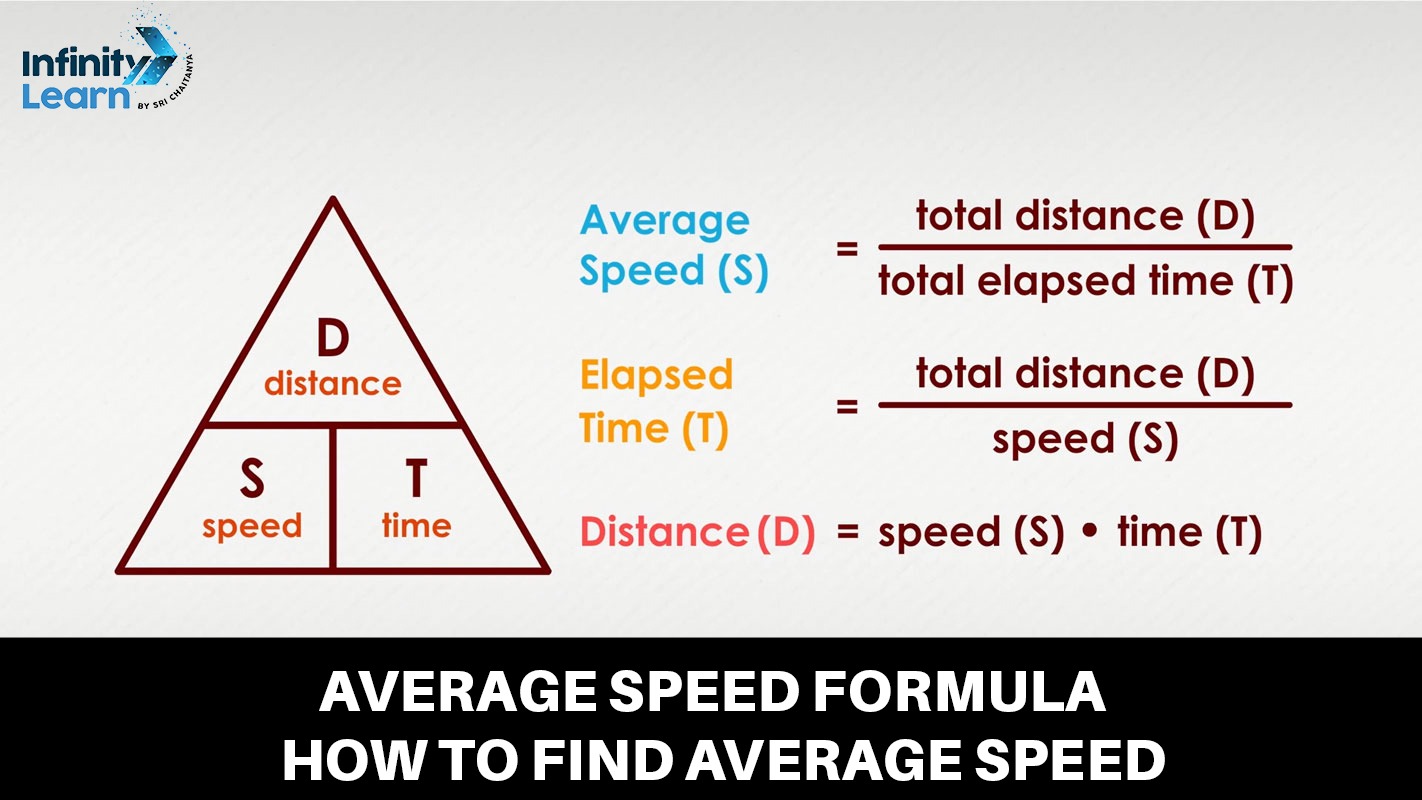Table of Contents
Average Speed Formula: Average speed is a scalar quantity that represents the total distance travelled by an object divided by the total time taken to cover that distance. It provides an overall measure of how fast an object is moving without considering the direction of motion.
The formula for average speed is:
Average Speed = Total Distance / Total Time
In this formula, the total distance is the sum of all the distances travelled by the object, and the total time is the sum of all the time intervals taken to cover those distances.

What is Average Speed Formula
The average speed formula is a key concept in physics and everyday life, helping us understand how fast something moves over a certain distance. Calculated as the total distance traveled divided by the total time taken, this formula. It gives a simplified view of motion without needing details about specific changes in speed along the way. Whether analyzing a car’s journey, a runner’s performance, or even the orbit of planets, average speed helps capture the “big picture” of motion. It’s a fundamental tool in physics, providing a quick and easy way to gauge movement over any given journey or path.
Average Speed = Total Distance / Total Time
Average speed is different from average velocity in that it does not take into account the direction of motion. It only considers the magnitude of the displacement covered per unit of time. Therefore, even if an object changes its direction during the course of motion, the average speed will be calculated based on the total distance covered divided by the total time taken.
The SI unit of average speed is meters per second (m/s), but it can be expressed in other units such as kilometres per hour (km/h), miles per hour (mph), or feet per second (ft/s), depending on the context.
Average speed is commonly used in everyday life to describe the overall speed of objects, such as vehicles, runners, or cyclists. It provides a simple measure of how fast an object is moving without considering the intricacies of its motion or changes in direction.
Solved Examples on Average Speed Formula
Example 1: A car travels a distance of 300 kilometres in 5 hours. Calculate its average speed.
Solution:
Given:
Distance = 300 km
Time = 5 hours
To calculate average speed, we use the formula:
Average Speed = Total Distance / Total Time
Substituting the given values into the formula:
Average Speed = 300 km / 5 hours
Average Speed = 60 km/h
Therefore, the average speed of the car is 60 kilometres per hour.
Example 2: A cyclist rides a bike at a speed of 20 kilometres per hour for 2.5 hours. Calculate the total distance travelled.
Solution:
Given:
Speed = 20 km/h
Time = 2.5 hours
To calculate the total distance, we rearrange the formula for average speed:
Total Distance = Average Speed × Total Time
Substituting the given values into the formula:
Total Distance = 20 km/h × 2.5 hours
Total Distance = 50 kilometres
Therefore, the cyclist travelled a total distance of 50 kilometres.
Example 3: A car travels a distance of 150 kilometres at a speed of 50 kilometres per hour. After covering this distance, the car continues to travel for another 2 hours at a speed of 60 kilometres per hour. Calculate the average speed for the entire journey.
Solution:
Step 1: Calculate the time taken to cover the first distance.
Distance = 150 kilometres
Speed = 50 kilometres per hour
Using the formula:
Time = Distance / Speed
Time = 150 km / 50 km/h
Time = 3 hours
Step 2: Calculate the total distance travelled.
Total Distance = Distance 1 + Distance 2
Total Distance = 150 kilometres
Step 3: Calculate the total time taken.
Total Time = Time 1 + Time 2
Total Time = 3 hours + 2 hours
Total Time = 5 hours
Step 4: Calculate the average speed.
Average Speed = Total Distance / Total Time
Average Speed = 150 km / 5 h
Average Speed = 30 kilometres per hour
Therefore, the average speed for the entire journey is 30 kilometres per hour.
Frequently asked questions on Average Speed Formula
What is average speed?
Average speed is the total distance travelled divided by the total time taken. It represents the overall rate of motion of an object over a given period.
How is average speed different from instantaneous speed?
Average speed is the total distance divided by the total time, providing an overall measure of speed. Instantaneous speed, on the other hand, refers to the speed of an object at a particular instant, without considering the entire journey.
Can average speed be greater than the maximum instantaneous speed?
No, average speed cannot be greater than the maximum instantaneous speed. Average speed takes into account the entire journey and includes periods of slower speeds, making it always equal to or less than the maximum instantaneous speed.
What are the SI units of average speed?
The SI unit of average speed is meters per second (m/s). However, it can also be expressed in other units such as kilometres per hour (km/h) or miles per hour (mph).
Is average speed affected by changes in direction?
No, average speed is a scalar quantity and is not affected by changes in direction. It only considers the total distance covered divided by the total time taken, irrespective of the direction of motion.
How average speed is calculated when the speed varies throughout the journey?
To calculate average speed when the speed varies, divide the total distance covered by the total time taken. This provides an overall measure of speed, considering the varying speeds during different parts of the journey.
Can average speed be negative?
No, average speed cannot be negative. Average speed is always a positive value or zero, representing the magnitude of the average rate of motion







